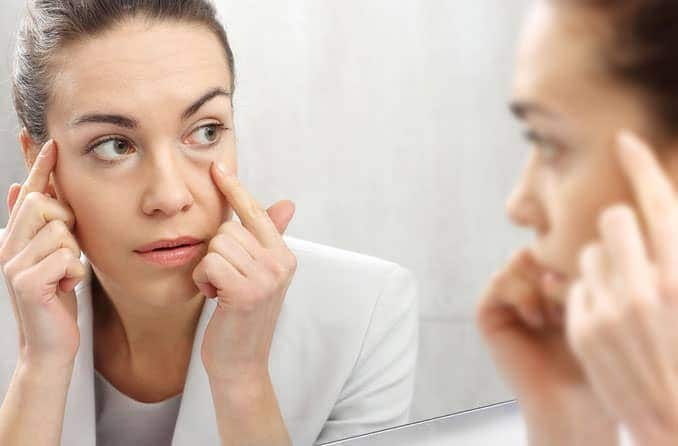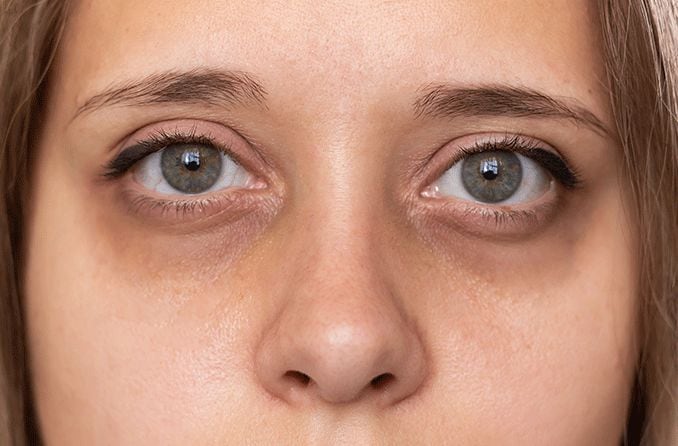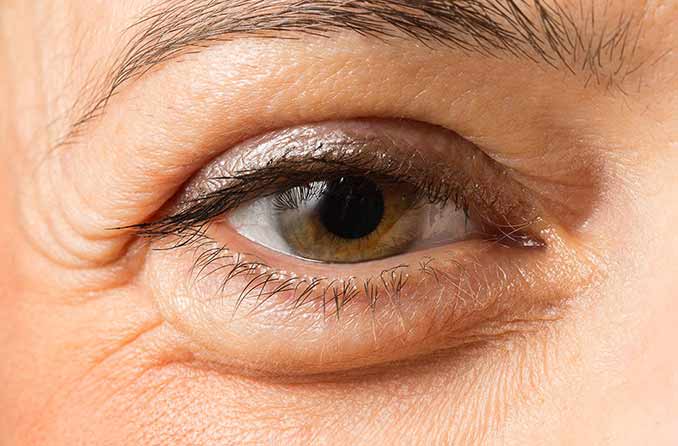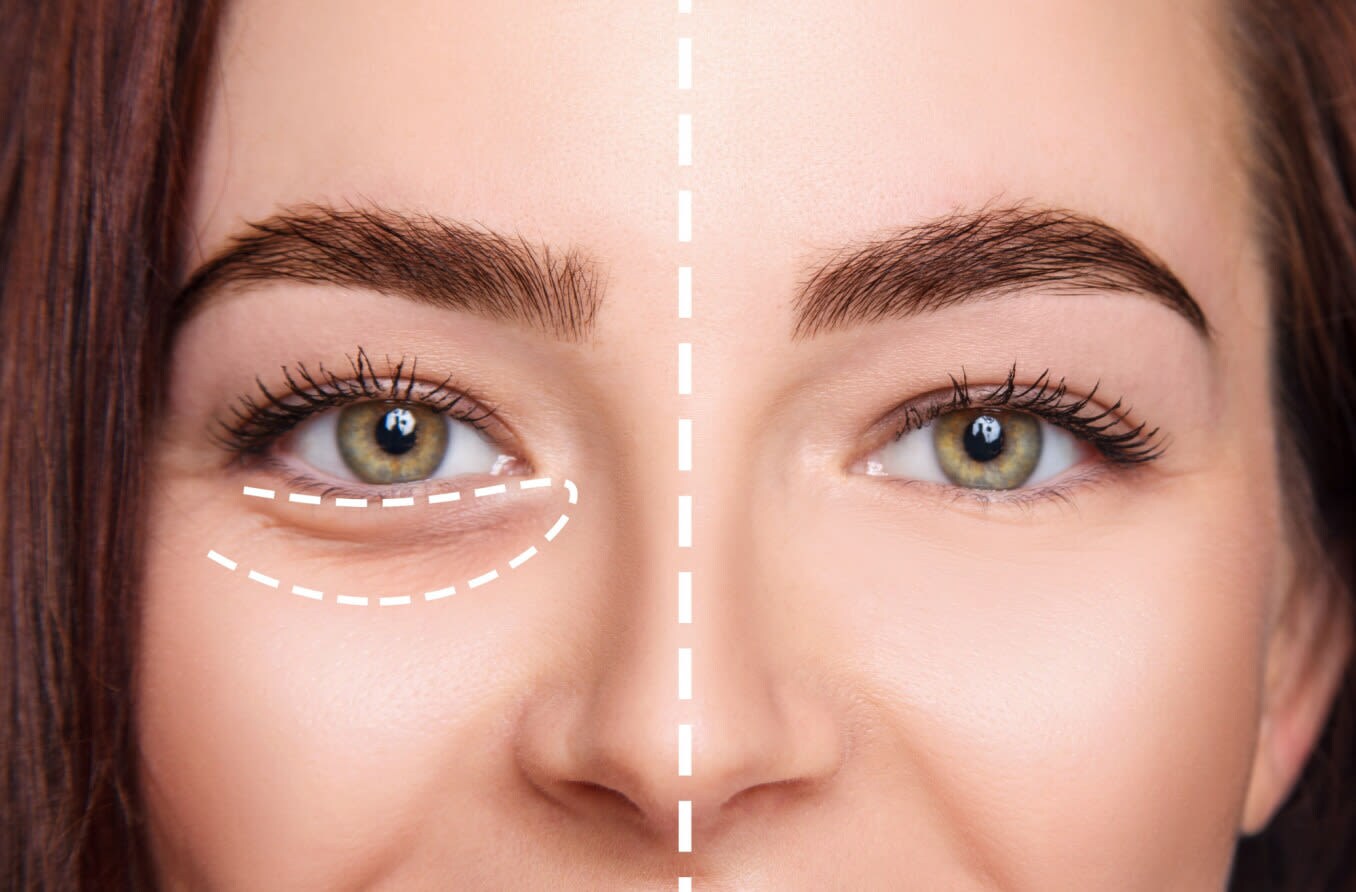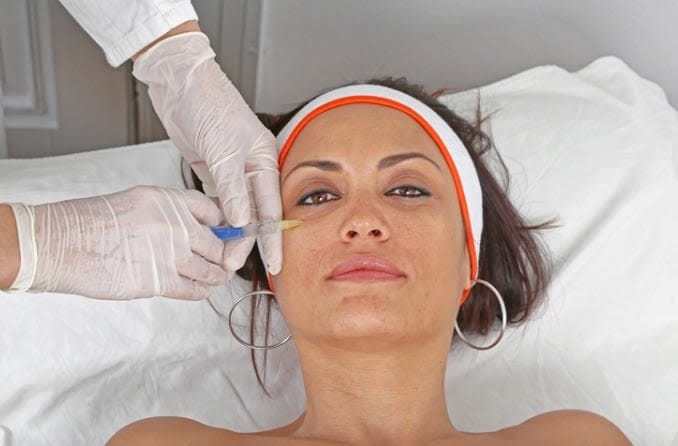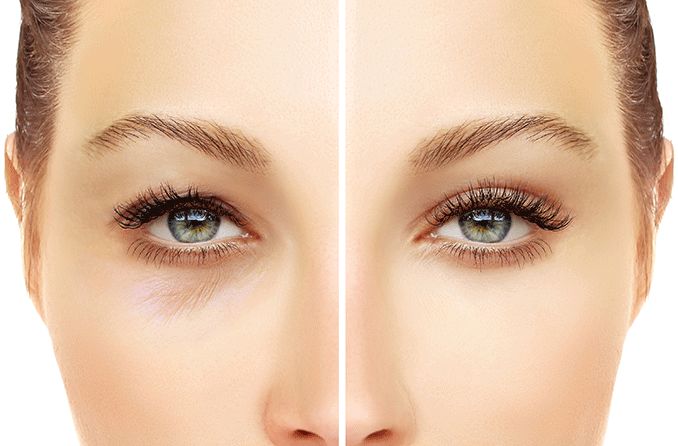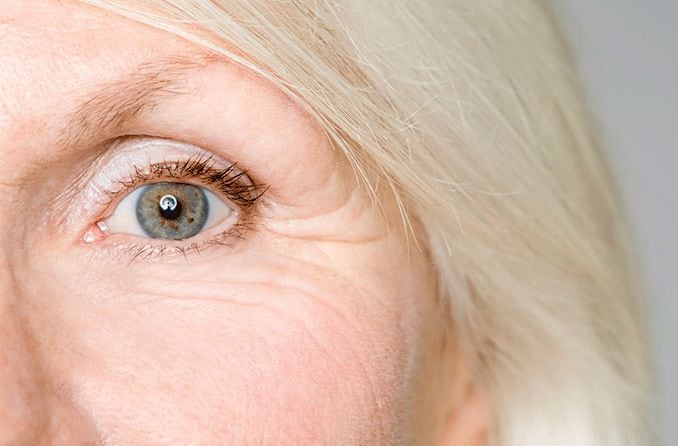What are bags under the eyes?
Bags under the eyes, also called eye bags, form when weakened and sagging skin relaxes and creates a pouch. The fat pads under the eyes then slip down to fill the space, giving the appearance of a “bag.”
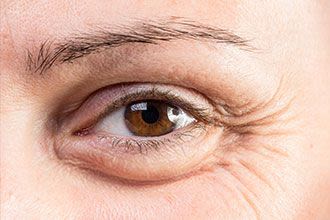
Excess fluid in the body can also pool in this area, making the lower eyelids look even more puffy and swollen. Any shadows or discolored skin under the eyes will make eye bags look more prominent.
Under-eye bags are mostly a cosmetic issue. They’re usually harmless, but can sometimes be a sign of an underlying medical condition.
Most eye bags under the eyes are more noticeable in the morning, after the fluid has had all night to settle in.
What causes bags under the eyes?
Aging is the most common cause of bags under the eyes. As we get older, we experience a loss of fat padding and collagen, the major component of connective tissues in skin, muscles and other body parts.
Lower collagen levels cause the skin and underlying muscles all over the body to lose elasticity and tone. This sagging is especially noticeable around the eyes because the skin there is very thin.
Other factors that can contribute to bags under your eyes include:
- Fluid retention
- Lack of sleep
- Allergies
- Stress
- Eye fatigue
- Inherited facial features
- Infections
- Smoking
- Chronic medical conditions (such as thyroid disease)
If the swelling becomes severe, painful, itchy, red or persistent, see an eye doctor.
How to get rid of bags under your eyes
To get rid of eye bags, you need to find out what’s causing them in the first place.
When the bags under your eyes are a result of environmental or health issues, simple home remedies and lifestyle changes may help reduce their appearance.
Remedies include:
- Get plenty of sleep; the CDC recommends at least 7 to 9 hours of sleep every night for adults, depending on your age.
- Sleep with your pillow elevated a few inches to keep fluid from pooling around your eyes.
- Drink enough water. Common guidance suggests adult women drink 2.3 quarts of water a day and adult males drink 3.2 quarts a day. But Cleveland Clinic recommends talking to your doctor to get the most accurate amount.
- But avoid fluids before bedtime — and excess salt throughout the day.
- Use a cool, damp washcloth as an eye compress, preferably while you’re sitting upright. You can also use cucumber slices or cold, damp tea bags to help reduce swelling.
- Keep your allergy symptoms under control by avoiding triggers and taking prescription or over-the-counter allergy medications, as directed by your doctor.
- Use cosmetic concealers to cover up dark under-eye shadows.
One popular home remedy for reducing bags under the eyes is the use of hemorrhoid cream. (Yes, really.)
Hemorrhoid creams contain phenylephrine, which constricts blood vessels and can temporarily tighten the skin under the eyes. This can temporarily reduce some of the swelling, according to Johns Hopkins Medicine. But be very careful not to get the cream in your eyes.
If you’re a smoker, make every effort to quit. Avoiding smoking is not only good for your general health and eyesight; it will also slow the collagen loss that thins the skin.
If you choose cosmetic surgery to remove the bags under your eyes, you’ll also heal quicker if you don’t smoke.
There are also wrinkle treatments and skin therapies designed to tighten under-eye skin and reduce puffiness. These include options such as:
- Chemical peels
- Laser resurfacing
- Injectable dermal fillers
The benefits, side effects and risks associated with these options should be discussed with your ophthalmologist, oculoplastic surgeon or plastic surgeon.
SEE RELATED: Eye cream: Does it really work?
Surgical options
If you’ve tried some or all of the remedies listed above and aren’t satisfied with the results, surgical procedures are available to help get rid of eye bags.
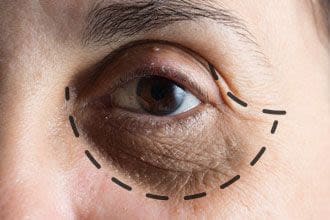
Cosmetic eyelid surgery, also known by the medical name blepharoplasty, can tighten and smooth out the skin under the lower eyelids. It can also be used to treat puffy or drooping eyelids.
If you’re considering cosmetic eye surgery, keep in mind that procedures will not be covered by medical insurance when they’re done solely to improve appearance.
Lower-eyelid blepharoplasty is usually done as an outpatient procedure under local anesthesia with sedation. In some cases, the surgeon will choose general anesthesia instead.
After surgery, you can expect some swelling, bruising and eye dryness in the days following the procedure. Most people find that swelling and bruising decreases significantly in about 10 to 14 days.
Complete recovery from eyelid surgery takes about six weeks or more.
FAQs
Q: Are eye bags permanent?
A: “Bags under eyes” are sometimes caused by acute inflammation — such as an insect bite or infection of the soft tissue — though these tend to happen on just one side. These cases usually resolve on their own, but more severe cases may require a doctor to prescribe medication. The more common under-eye bags result from a loss of firmness of the skin, a natural part of the aging process.
Several non-invasive techniques can help reduce the appearance of under-eye bags, ranging from cool compresses to topical creams (though results can vary). If you want to remove eye bags more permanently, a cosmetic procedure called blepharoplasty can tighten and smooth out the skin under your eyes.
Q: What foods can cause eye bags?
A: Foods that are high in sodium, such as canned meats and vegetables, cheese and processed foods, can cause puffiness under the eyes. Drinking caffeine and alcohol can also cause dehydration, which may lead to under-eye bags.
Q: Does Vaseline help eye bags?
A: There is no medical proof that applying Vaseline under the eyes will help eye bags caused by the natural aging process. The Vaseline website encourages applying a thin layer to help heal and protect dry or chapped skin around the eyes. However, they do not recommend the product as a means of reducing under-eye bags.
If you’re considering surgery for the bags under your eyes, your surgeon will be able to lay out the process in detail, explain the risks involved, and answer any questions you have.
LEARN MORE about blepharoplasty and other eyelid surgery
Adam Debrowski also contributed to this article.

